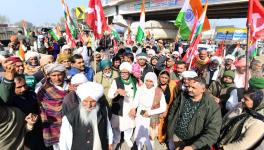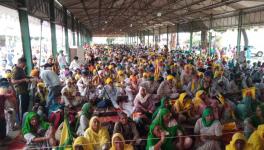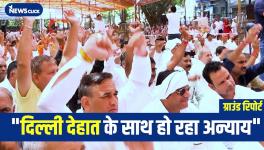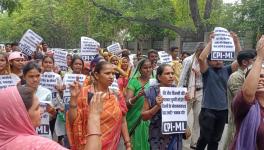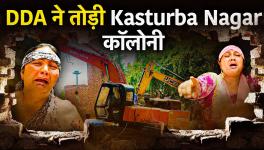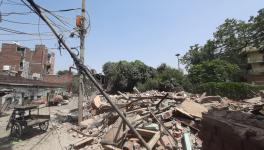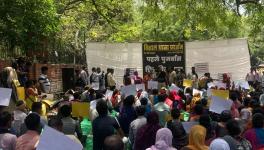Can We Build a Home for the Homeless?
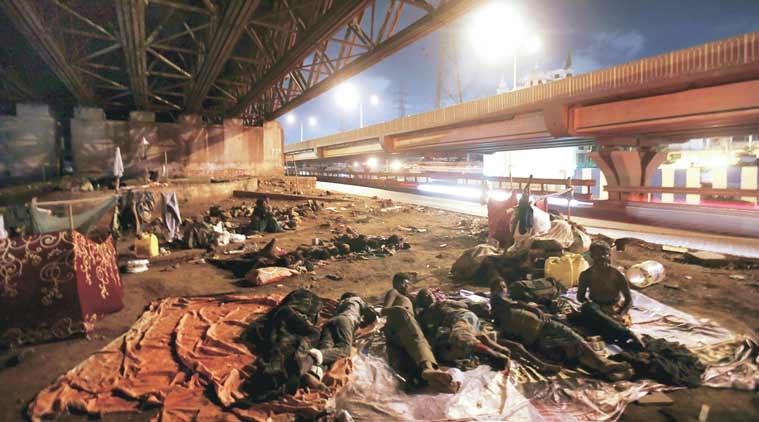
The 70th Republic Day of India was celebrated as usual with fervour throughout the country. Various sections of the people have written elaborately in the media about the relevance of the day, and about the underlying principles of liberty, equality and fraternity in the Indian Constitution.
Much has been stated about all these three important elements, but the recent Oxfam report has shed a light on the glaring wealth inequality prevalent in the country. According to the report, just nine billionaires own as much wealth as 50 per cent of the lower half of the population in the country. The top 10 per cent hold 77.4 per cent of the total national wealth. The 119 billionaires in the country add Rs 2,200 crore per day to their wealth. These startling figures make mockery of the principles and the growth trajectory in the country.
However, the lowest in the ladder of the hierarchy of asset holders are the homeless and the shelterless in the cities. Dozens of people die every year in a city like Delhi because of the adverse weather conditions.
According to the census of 2011, India has more than 1.7 million (17 lakh) homeless residents, of which, 938,384 (10 per cent) are located in urban areas. In Delhi, there are different figures for the number of homeless from different sources. The government estimate says it is about 46,724, whereas Ashray Adhikar Abhiyaan (AAA) puts the figure to over 5,00,000.
These homeless people are chased out often by the civic and police authorities. Interestingly, they are the ones who are seen selling the paper tricolour national flag at the crossroads every year; but just before the Republic Day, they are thrown out of the city.
Ahead of the Commonwealth Games in 2010, nearly 300,000 homeless were evicted from the national capital. For the world class cities that are developing in India the homeless are inconvenient and incompetent.
It was only after the intervention of the Supreme Court on a writ petition filed by a few concerned citizens and civil society organisations that the governments started building the night shelters. The SC acknowledged that every person has the right to sleep in a shelter because it is inherent to the fundamental/constitutional ‘right to life’. The SC emphasised while commenting on Article 21 of the constitution that “shelter for a human being, therefore is not a mere protection of his life and limb. It is home where he has opportunities to grow physically, mentally, intellectually and spiritually. Right to shelter , therefore, does not mean a mere right to a roof over one’s head but right to all the infrastructure necessary to enable them to live and develop as a human being”.
However, a cursory look at these shelters will explain why they are being called the ‘horror centres’ – as termed by Sonu Hari, an activist working on urban poverty.
In Delhi, a tug of war is always on between the Municipal Corporation of Delhi controlled by the Bharatiya Janata Party (BJP), and the state government run by Aam Aadmi Party. Additional role is played by the Delhi Development Authority, which falls once again under the BJP-ruled Centre. The Delhi Urban Shelter Improvement Board (DUSIB) is a state body that has to co-ordinate with DDA and the MCD on regular basis to fetch land for permanent shelters. In Delhi, the political responsibility does not lie only with the state, but also with the local bodies. Since the various departments are under parallel administrations, there is immense confrontation and lack of coordination.
There is an interesting similarity between the right to work and the right to shelter. A significant number of people who require a roof over their head have a low rate of employability. Some of them even have some form of disability that prevents them from getting a full-time job. In a case study of an urban shelter home nea Bangla Sahib Gurudwara, which is considered to be far better than the rest, owing to its proximity to the gurudwara, there are startling results. Out of the total inhabitants, 50 per cent were unemployed. A few were working as maids and over 17 per cent were students. Begging was practiced by more than 15 per cent. The key reasons for migration were employment opportunities, followed by high rent in the localities which became unaffordable. Another major reason was flood that destroyed their harvest back in their states. One of the reasons happened to be family quarrels as well. Cases of child abuse, sex abuse were rampant. Vanishing of children from the night shelters is not an uncommon feature either.
Unfortunately, the much tom-tommed scheme of the Modi government, the ‘Pradhan Mantri Awas Yojana (PMAY)’ has not even covered 15 per cent of its target. The Modi regime was supposed to construct 2 crore houses in both the urban and rural India. The homeless will, it seems, have to wait for many more Republic Days to ensure that they have a decent living, assured by the Constitution.
Get the latest reports & analysis with people's perspective on Protests, movements & deep analytical videos, discussions of the current affairs in your Telegram app. Subscribe to NewsClick's Telegram channel & get Real-Time updates on stories, as they get published on our website.









